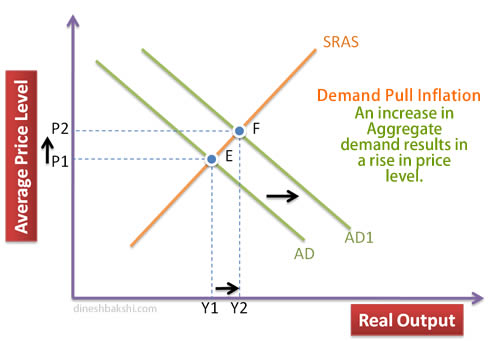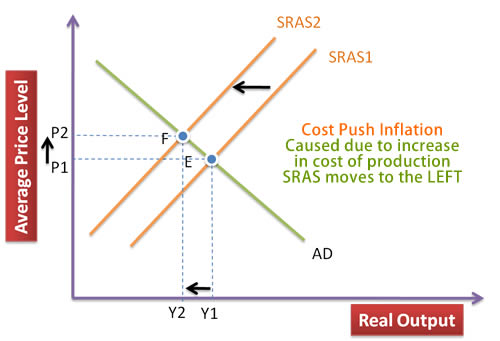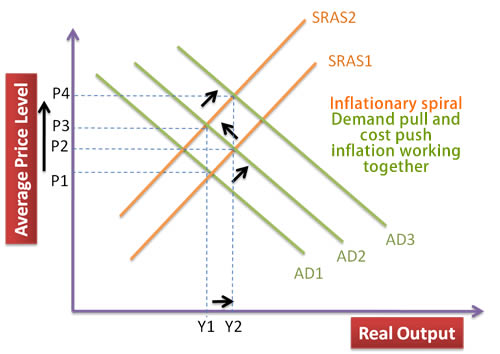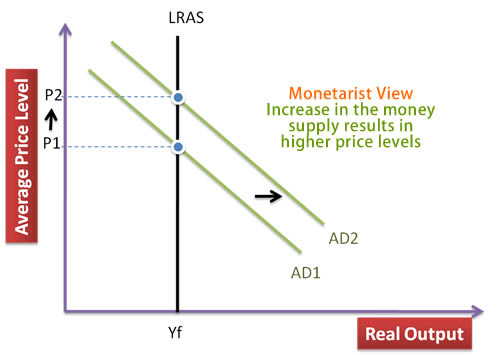Types and causes of inflation
Demand Pull inflation
This type of inflation results due to the increase in Aggregate demand in the economy. The movement of aggregate demand from AD1 to AD2 results in an increased average price level in the economy i.e. P1 to P2.

Demand pull inflation is caused due to the changes in the determinants of AD. Whenever, any of the components of AD (i.e. consumption, investment, government spending and net exports) will increase, this will result in an increase in aggregate demand.
Cost Push Inflation
Increase in cost of production will result in cost push inflation. As the cost of production increases, the firms will reduce supply. The aggregate supply will shift to the left, from SRAS1 to SRAS2. This will result in an increase in the average price level in the economy. Real output will fall.

Cost Push inflation is mainly caused due to the following factors:
· increase in wages (wage push inflation)
· increase in cost of raw materials
· increased cost of imported components (import-push inflation)
Inflationary Spiral
It is self-sustaining upward trend in general price levels due to interaction of demand pull and cost push inflation. It is also known as Wage price spiral. High cost of living prompts demands for higher wages which push production costs up forcing firms to increases prices, which in turn trigger calls for fresh wage increases ... and so on.

Monetarists view of inflation
As per monetarists (new classical economists) inflation is caused due to the excessive supply of money in the economy. According to monetarists an increase in money supply results in higher aggregate demand from AD1 to AD2. Monetarists assume the economy to operate as full employment level of output, thus, any increase in AD is purely inflationary.






